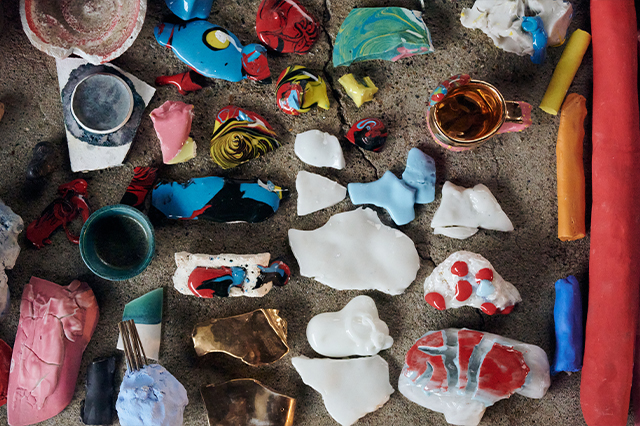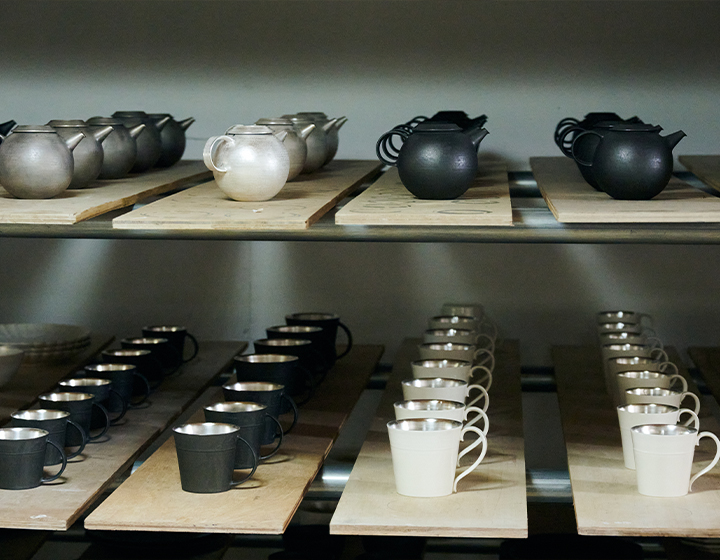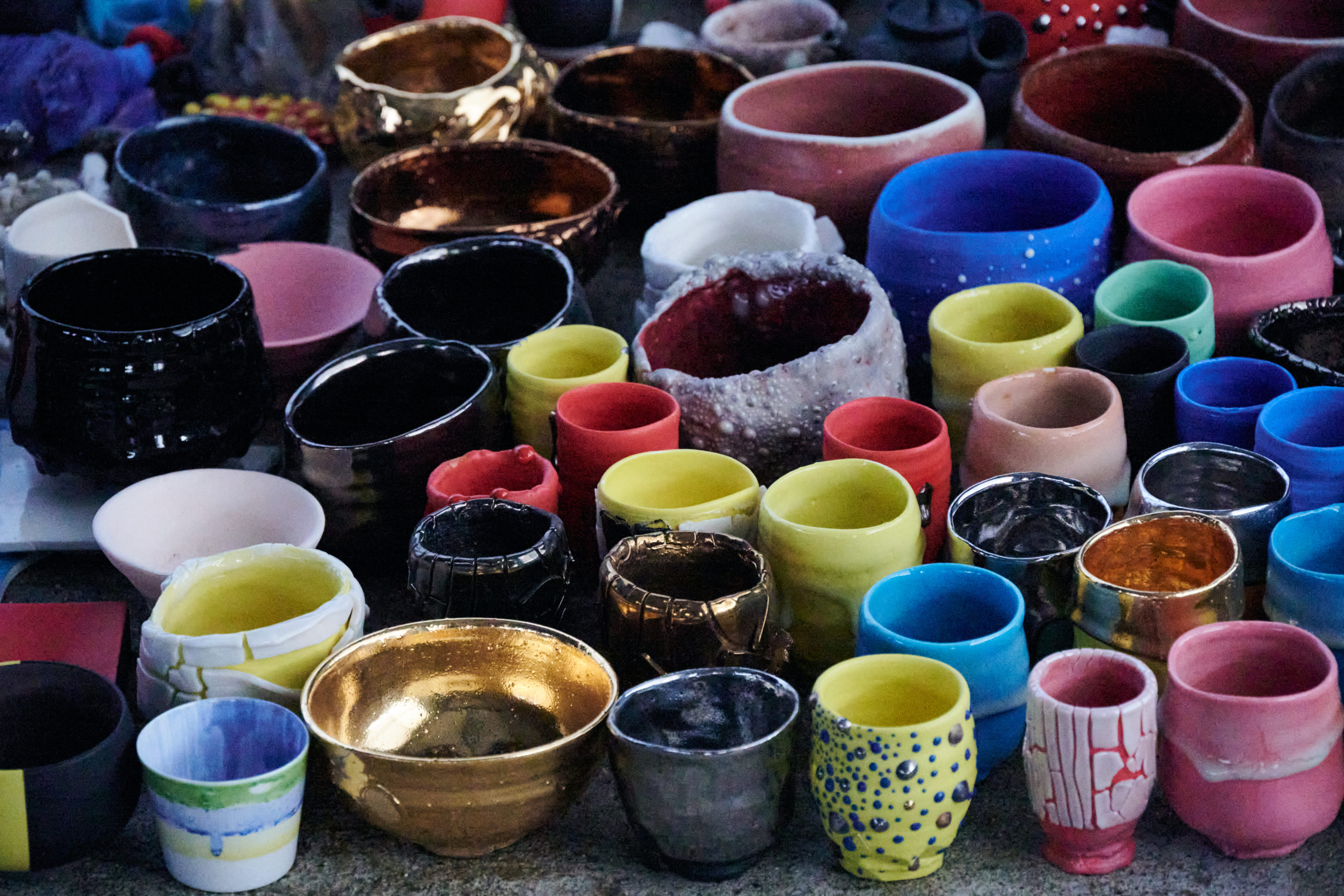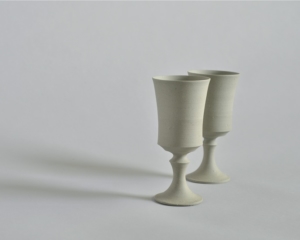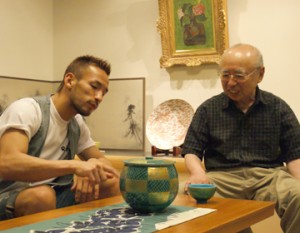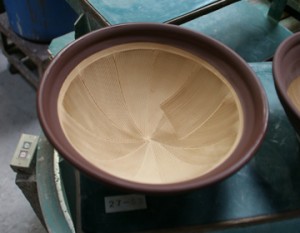World-class ceramic artist
Craft” or “art”? The question of which market to market a work is an unavoidable one for a ceramic artist to become independent. Roughly speaking, the former tends to be evaluated on the basis of practicality and utility, whereas the latter often demands originality and novelty in the form of the work and the artist’s own worldview. It is quite a difficult task for a ceramic artist to balance both of these. Takuro Kuwata, who has a studio in Tajimi City, Gifu Prefecture, is an artist in a unique position in the art world.
While using traditional techniques often seen in his classical works such as “Kairagi” and “Ishibaku,” Kuwata’s works, which actively incorporate shapes and vivid colors outside the boundaries of ceramics, have been highly acclaimed at art fairs around the world. In addition to collaborations with Loewe and Tod’s, he has also attracted attention from the fashion industry, including an installation at the Trading Museum Comme des Garçons.
One of the things that led him to his current style was seeing an exhibition of Shino ware by Toyozo Arakawa, a living national treasure ceramic artist. One of the things that led to his current style was when he saw an exhibit of Shino ware by Toyozo Arakawa, a living national treasure. I decided to interpret this in my own way and do modern Shino,” recalls Kuwata, who at the time was making simple white porcelain pieces that one would never imagine from his current style.
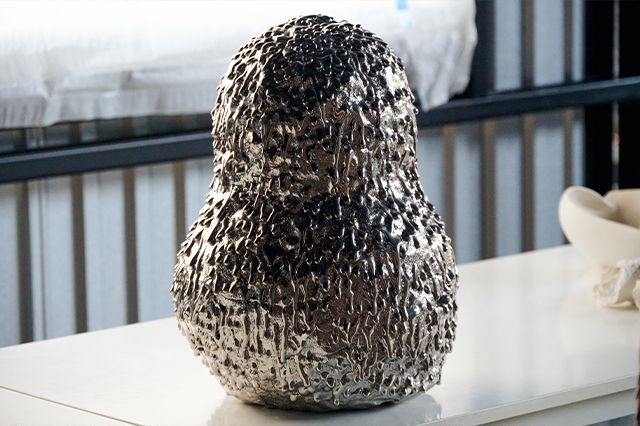

Into the world of art, not crafts
He was also moved by the unexpected pop of color that resulted from mixing pigments by eye, which should normally be weighed. He immersed himself in reproducible color expression, intentionally trying to create the excitement he felt when he opened the kiln. As a result of following the voice of his heart and continuing to create works of art, he was approached by Tomio Koyama Gallery, a well-known gallerist who is known as an international promoter of Japanese contemporary art, and he began to work in the art world.
Later, however, Mr. Kuwata faced the difficulty of being “free. The gallery demanded new and interesting expressions. Works that were considered unconventional in the world of crafts were equally unappreciated in a place where there were no restrictions. The knowledge of reality led him to move further away from the concept of practicality, and to become more radical in form and color.
In other words, Kuwata’s works have evolved by carefully unraveling his communication with others and incorporating new values. Once he gains a perspective that he did not have before, he incorporates the new world he sees from that perspective into his own. Although he himself does not change, he incorporates various stimuli as variables in the process of creation, and as a result, he creates something new. This has been recognized not only in the world of crafts, but also in contemporary art, and has even become known to the cutting edge of the fashion industry, such as Loewe and Comme des Garcons, and continues to expand the scope of his activities.
I want to be part of such a cycle,” he says. I want to be part of such a cycle,” he says, and he will continue to create works full of surprises in the future.
